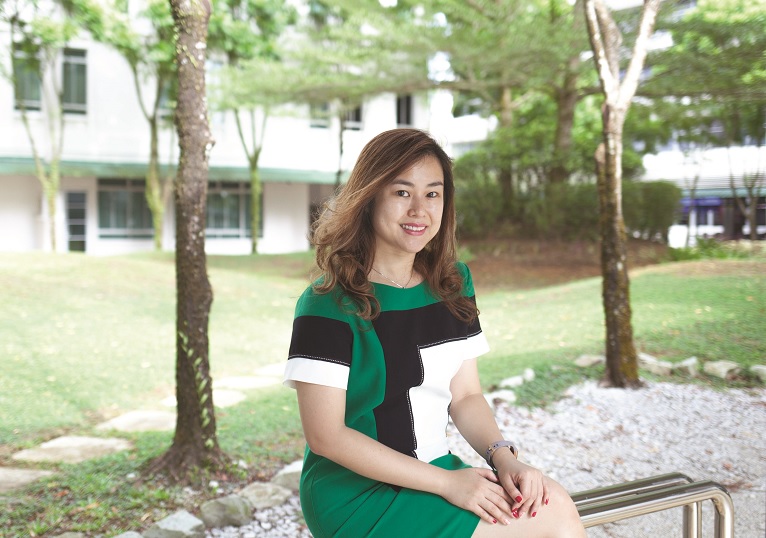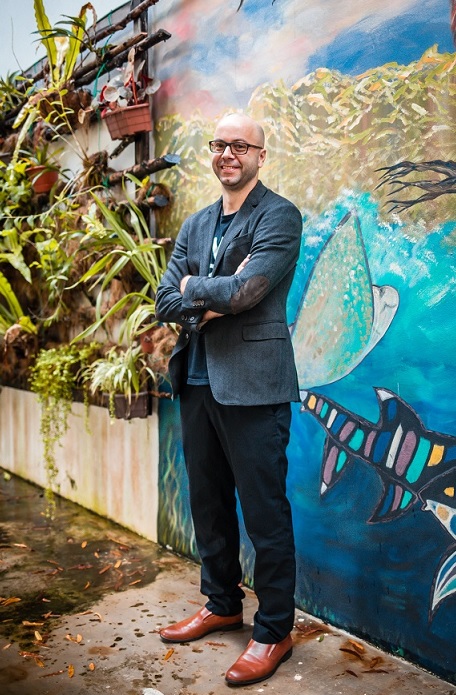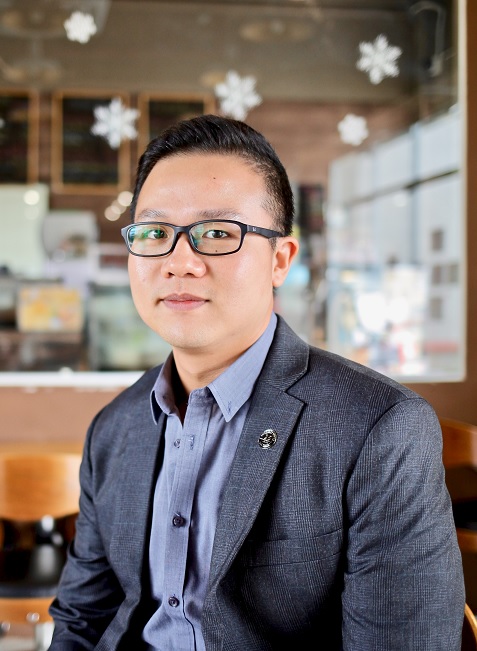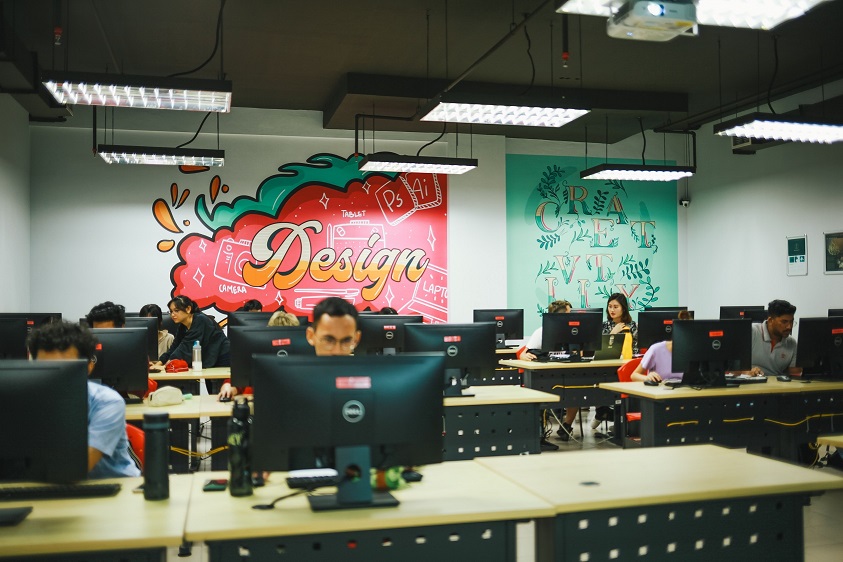In conjunction with World Teachers’ Day celebrated annually in October, Swinburne acknowledges the unwavering dedication of its academic staff to deliver high-quality education to our younger generation. With the theme ‘Teachers: Leading in crisis, reimagining the future’, this year’s celebration recognises the roles of teachers who take on new challenges caused by the COVID-19 pandemic. It also highlights the struggles they face in a new, remote and different learning environment highly dependent on digital technology.
The transitioning is not a walk in the park to some. In this latest SwinSights story, we spoke to a number of our lecturers to find out how they’re adapting to the new norm.
Ir. Dr Angelia Liew San Chuin
External Engagement Coordinator and senior lecturer in civil engineering, School of Engineering

“Connecting with my students was challenging at first. I’ve learned that successful physical face-to-face instruction does not always translate to successful online instruction and that some students are unable to work alone as they need friends and teammates. It was also a challenge to train our students and staff including myself to navigate through the digital learning platform. Not every home has a reliable internet connection or readily available devices for students to use.
Starting online teaching within two weeks of the Movement Control Order (MCO) was my biggest fear! Teaching online course for the first time, there were many questions that came to my mind. How to develop high-quality online learning tools or ensure the quality of the classes? Fortunately, we were given training on how to conduct classes online with our counterparts in Melbourne on a weekly basis.
The advantage of online learning is we can truly embrace the ‘learn anywhere, anytime’ learning model. The downsides, however, students’ lack motivation and control over their learning experience. The worse form of learning is to sit passively and listen. Thus, students must be well-organised and self-motivated in order to keep up with the changes.
Blended learning, which is online learning with a right mix of guided traditional face-to-face method, is the way forward. Definitely a dynamic duo for future of education. On the other hand, the digital divide has widened where COVID-19 has led to a new reliance on digital infrastructure and connectivity. The future of education will need to accelerate digital infrastructure roll-out to support greater digital inclusion.
These challenges have taught me the importance of remaining close to students, demonstrating reliability and modern online education experience. It has also reminded me of other highly important skills that students need in this unpredictable world such as informed decision making, innovative problem solving, and perhaps most of all, adaptability. Resilience must be built into our educational systems too.”
Augustus Raymond Segar
Deputy Head of School and lecturer in multimedia design, School of Design & Arts

“At first, it was hard to create a strong social presence virtually when conducting live lecture session and consultation. Also, converting teaching and learning materials to videos is very time-consuming. In my units, I have recorded up to 300 video tutorials related to game development, 3D character rigging and animation so far. I was unsure how students would adapt but I was glad that we have a system in place such as the Check-In Survey to mitigate those uncertainties.
One of the advantages of online learning is that through asynchronous and synchronous delivery method, students can view the online content at their own pace. This makes learning convenient and students take responsibility for their own learning. However, virtual sessions can never replace face-to-face classroom experience and those with poor internet connection are greatly affected.
In future, the role of educators will continue to evolve to keep pace with the changes. Where technology is concerned, it plays a very critical role in education more than ever. I also foresee blended learning mode to be the common mode of delivery.
With this transition, I’ve learned a few things. Develop good practice for online teaching and learning for examples, keep the live session short, have clear expectations, and communicate regularly; always be kind and aware that not everyone has the luxury of a perfectly conducive space for online learning; continue to explore mediums and methods to facilitate effective virtual interactions for examples, Microsoft Teams video calls or Canvas discussion forum; and be mindful of digital divide and go low-tech to ensure those who have limited access to the internet and appropriate devices are not left out.”
Christina Yin
Senior lecturer, School of Foundation Studies

“Initially, my biggest challenge was downloading and learning to use the necessary software. Also, I was worried about being able to engage well with my students. The first live session on Microsoft Teams was tough – all those mute and impersonal circles and initials looking back at me from the screen. I’ve found that students are even more reluctant to speak in an online class. Always, at the back of my mind, I’m wondering if I’m getting the real picture of what’s going on.
The greatest advantage is being able to teach and learn remotely as we are now. I’ve been furthering my studies at another university located in Selangor and have never been able to attend the many workshops and seminars offered on campus before, but now I can, online. The opportunities to learn and to participate in different virtual communities really open many doors and they’re very exciting!
However, the greatest disadvantage is not having that personal relationship with my students; not being able to really get to know them and not just in terms of their academic performance but as real people who I might encourage to take part in meaningful activities.
Hopefully, one day, we can return to the traditional on-campus version because that community feeling and experience cannot be replicated online. However, even if that were possible, I believe that online platforms for education will become more prominent but we need to make sure that children, teenagers and young people from poor urban and rural communities do not get left behind.
I’m just glad that we actually have the means to continue teaching despite the pandemic. There are many out there who are completely cut off from getting an education now or from earning a decent living. So, I’m grateful to still be able to teach, engage with my students and still run activities outside the classroom.”
Associate Professor Moritz Müller
Head of AquES (Aquatic and Environmental Research Sciences) Research Group and lecturer in biotechnology, School of Chemical Engineering and Science

“Hands-on learning and incorporating ‘lab-relevant’ skills into the online class was a challenge. Obviously, there were many technical skills that I quickly needed to brush up on. My initial fear was that I wasn’t able to teach relevant skills that go beyond what you would learn from reading a book. I did not want students to just sit and stare at the screen for half an hour without remembering anything a week later. I was also worried about getting them to actively participate and creating assignments that challenge them in this ever-changing future.
I’d say providing and making ‘textbook-style’ content available to the whole class at any time of their liking is definitely a plus. A challenge of online learning is to create that spontaneity that you can get in face-to-face classes; that one question from a student which can trigger a fantastic discussion. There are more and more tools available to create engaging discussions online but it’s nothing close to what you can get in face-to-face.
In my opinion, crises provide a chance to grow and to reflect on what is important moving forward. Education has certainly benefited from a push to adopt more technology but the value of face-to-face is also coming out loud and clear. I guess the future is going to be a good mix of both.
What I learn from this whole experience is that science is all about evolution and adaptation, and having a flexible mind. Being able to find solutions under challenging conditions is a key skill for the future. In the long run, the experiences and resilience gained could become an asset to all of us.”
Dr Valliappan Raman
Deputy Head of School, senior lecturer and Discipline Leader, School of Computing

“The top three challenges of online learning would be getting a reliable internet connection, difficulty in replicating a face-to-face classroom experience, and the struggles to teach programming units via a virtual environment. Initially, I feared that my students were unable to submit their assessments on time and continuously get them to engage in learning. Personally, I feared that I didn’t have the ability to cope with monitoring students’ progress.
The good thing about online learning is that students have the freedom to learn anywhere and anytime via pre-recorded video sessions and real-time engagement. It also increases confidence among students and provides students with the opportunity to become more responsible and disciplined. However, the disadvantages are the lack of social interaction, isolation issue, and poor time management skills.
The current situation has given the education industry the opportunity to rethink on the current teaching models. The future will gear towards blended learning approach and technology will play a key role in its delivery.
It’s not as easy as it seems to keep the students motivated. This is where mentorship and guidance by the lecturers play a big role. In my opinion, more rethinking is required where I need to provide multiple inputs to ensure students perform well in their learning and can complete the tasks accordingly.”
Norizan Tan
Lecturer, School of Foundation Studies

“The lack of online teaching experience and embracing the new learning platforms were among the initial challenges I faced. Online delivery is challenging as I am unable to see or pick up cues from my students if they are able to follow my lectures during live sessions. Knowing what to teach was just the tip of the iceberg during this time. I had to know my way around MS Team and Canvas such as setting up online classes and uploading learning materials.
I was worried about not being able to teach as effectively, pick up the required online technology skills, and reach out to my students. With most units going online, not only do we have to know how or what to deliver, but we are also in a mission to help students learn effectively online.
The advantage of online learning is the flexibility in teaching and learning. It promotes independent learning, an important skill any students should possess. However, it requires a lot of discipline and commitment. So this can make or break you. A significant disadvantage would be the need to have a steady network. No matter how good or well prepared the teachers and students are, if your internet connection is poor, the whole learning process will be affected.
I think the future will see a more diverse mode of teaching and learning. The education sectors will probably be offering a variety of courses from the usual face-to-face delivery to online and even blended learning.
Learning is a never-ending endeavour and one has to be prepared to adopt and adapt quickly to stay relevant, or in this case to survive. I had my concerns and fears but I realised that I have to be open to changes, persevere and be resourceful to face this new norm. I think for me, at least, a quote by the late Alvin Toffler says it best that “The illiterate of the 21st century will not be those who cannot read and write, but those who cannot learn, unlearn, and relearn.”
Kevin Tan Tee Liang
Academic Coordinator and lecturer, School of Business

“Two words to describe my initial challenge – finding balance. Plenty of students were not well-equipped to manage the transition. They were often reaching out after the usual ‘office hours’, and understandably so, with classes to attend during the day. I made it a point to respond to them immediately regardless of when enquiries were made. However, with no clear lines drawn, it was truly draining. At one point, I was consulting a student at midnight! Fortunately, by late-April, many of them started to come to grips with online learning.
With the lack of physical interaction, I was afraid that students would get disengaged and left behind. In normal circumstances, this would not concern me as much as I believe that students have to learn how to take responsibility when enrolling into a higher education course. One has to understand however, this was a predicament no one signed up for.
I just wanted to be able to empathise with those who struggled immensely with the social isolation and mental stress that came with these unprecedented changes. Few of my students who stayed on campus did not even possess a laptop of their own. Staying at ‘home’ for some meant only having a meter or two between their bed and door. To make things worse, many of us had to cope with this without the company of family and friends.
The flexibility of online learning is a double-edged sword. Almost everything a student needs is at their fingertips. Apart from attending scheduled live sessions (which are often recorded), they can carry out their learning at any time that suits them. Queries were no longer restricted to physical classes or appointments. As always though, there needs to be a method to the madness. One has to remain disciplined and maintain good habits.
In my opinion, the future of education is neither completely online nor face-to-face, but a balanced combination of both i.e. blended learning. Though there are benefits to switching online, we yearn for the human element that makes learning both unique and exciting.
The silver lining of it all is to not be too quick to judge others. To be empathetic, always. We have long taken many things and people for granted. Some of us can cope with these challenges alright on our own, but we have always been stronger as a collective. We may not be in the same boat, but we certainly can withstand this storm together.”
Did You Know
A decade of online learning experience
Swinburne has almost a decade of experience in online delivery. Swinburne Online was launched in 2011, a partnership between Swinburne University of Technology and SEEK Learning. Swinburne uses learning management system Canvas for its online delivery which is easily accessible from any desktop, laptop, tablet or mobile device.
The first to achieve Adobe Creative Campus status
Swinburne is the first university in Australia to achieve the Adobe Creative Campus status. With the status, all Swinburne students have full access on all devices to Adobe Creative Cloud – a collection of the world’s best applications and services used for graphic design, video editing, web development and photography. This enables students to excel in digital literacy and enhances their employability.


